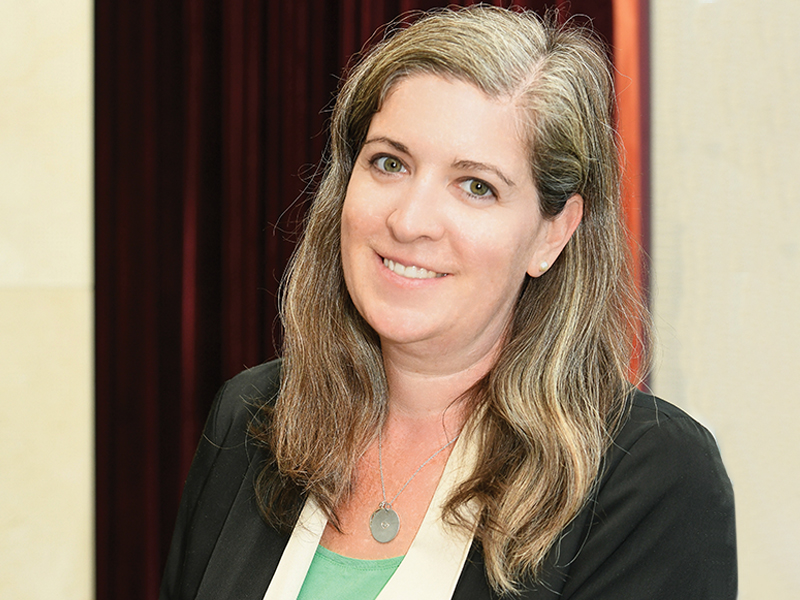

Every time I sit down to write my editorial for our annual Women’s Issue, now in its sixth year, the themes these issues highlight for women feel extremely personal to me. This year is no different.
In this year’s Cover Story, on page 14, six women between the ages of 22 and 53 shared how evolving benefits and workplace policies are impacting their unique life circumstances. As an employee, a woman and a single mother by choice, I see myself in all of them.
These women told stories about their fertility journeys, including the coverage for drugs and treatment provided through their benefits plans, as well as how their work-places manage parental leaves, the return-to-work process and the holy grail — as far as I’m concerned — of flexible working.
Read: Canadian women share what evolving benefits and workplace policies mean to them
Sure, I’d have quite a few more dollars in the bank if my benefits plan included coverage for fertility treatments and top-up during maternity leave, but the real game-changer for my life today is the flexibility provided by my employer.
I’m a single mother by choice to an incredible two-year-old and I’m expecting my second child later this year. The term SMBC means I chose to be a single mother, using a donor to conceive, which includes a lot of expenses. I work for a small employer and have a very basic benefits plan, so many of the required drugs aren’t covered. When I took my first maternity leave, I took a huge pay cut because my employer doesn’t top-up employment insurance benefits, which are capped in Canada — except in Quebec — at 55 per cent of your salary.
In my role at Benefits Canada, I hear every day about the innovative benefits and parental leave top-up policies offered by employers across the country. The ones that resonate the most with me are those designed to level the playing field for all employees when it comes to creating a family.
In this month’s Cover Story alone, I learned the University of Toronto covers fertility drugs and offers parental leave top-up and a robust return-to-work process. In addition, it recently introduced enhanced coverage for in vitro fertilization expenses — $15,000 every three months. Employees at school boards across Ontario, who are covered by the Ontario Teachers Insurance Plan, have fertility drugs coverage, plus a $12,000 lifetime maximum for IVF expenses. And KPMG in Canada offers the option for workers to return to work gradually when coming back from leave, as well as 50 hours annually of paid personal care time.
Read: Head to head: Are employers making progress on the gender pay gap?
Sitting on the sidelines and knowing these benefits are available at other employers can sometimes be very difficult. But as I noted earlier, I think the most important workplace policy is flexible working, particularly for my own personal circumstances.
It may look a bit different when I return to work next year after my second maternity leave, but right now, the fact that I can work flexible days — and remotely — makes a huge difference in my work-life balance. Throughout my workday, I can take the time I need to do things around the house, like laundry, preparing meals and walking my dog, so when I pick my son up from daycare at the end of the day, I can dedicate all of my attention to him.
Of course, I have to credit the pandemic for the rise in acceptance of flexible and remote working. For my employer, these types of working arrangements were rare before 2020. Occasionally, I would ask my manager if I could work from home as a one-off and the request was granted, but I always felt like it was frowned upon.
Today, I live a three-hour drive outside of Toronto and come into the office once a month. The rest of my time is spent on my laptop at home and I feel very productive as I balance my daily responsibilities for my job and my life.
Read: How Snap is using flexible working to help ease new parents’ return to work
This flexibility was also integral to my return from my first maternity leave. Since I’m a single income household and EI barely covered my mortgage, I returned to work after five months of leave, which was the perfect amount of time for me. But I was also able to hire a nanny to come to my house and care for my baby — and I could still take a break from work to breastfeed and snuggle him throughout the day.
I know I’m very lucky — many women work in fields that don’t allow for flexibility, like teaching and nursing. But for many jobs, flexibility is very doable. I encourage all employers to really consider their employees’ lives outside of work and try to offer benefits and workplace policies that fit their evolving needs and life circumstances.
I have no doubt, in the months and years ahead, that the employers that take these evolving priorities seriously will be the ones that differentiate themselves in the war for talent.
Jennifer Paterson is the editor of Benefits Canada and the Canadian Investment Review.
